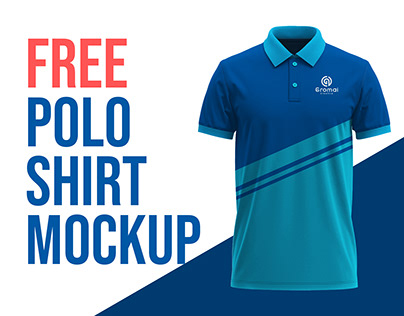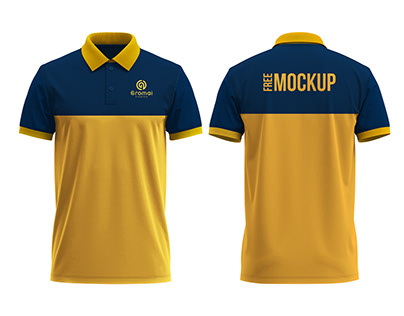In an increasingly personalized world, the ability to create something truly unique has never been more accessible. From custom phone cases to bespoke sneakers, consumers are embracing the power of individual expression. Among the most popular canvases for this creativity is the humble yet versatile polo shirt. Once a staple of sports and preppy fashion, it has evolved into a blank slate for personal branding, team spirit, and unique fashion statements. This evolution has been significantly propelled by the advent of online design tools, transforming what was once a specialized process into an intuitive, click-and-design experience for anyone with an internet connection.
But what lies beneath the user-friendly interfaces of these platforms? How did we get from rudimentary graphic editors to sophisticated 3D mockups and real-time design previews? This article delves into the "background" of not just one, but a multitude of online polo shirt design tools – exploring the technological foundations, design philosophies, and business models that have shaped this vibrant industry. We're not just looking at a list of tools, but rather the collective intelligence and innovation that powers the entire ecosystem, representing the common threads found across the numerous platforms available today.
The Rise of Personalized Apparel
From Niche to Mainstream: The Customization Revolution
The desire for customization isn't new. Tailors have existed for centuries, and bespoke items have long been a luxury. However, the digital age has democratized this desire, bringing it to the masses at an affordable price point. The internet, coupled with advancements in printing technology like Direct-to-Garment (DTG) and sophisticated embroidery machines, made it possible to produce one-off or small-batch custom items efficiently and economically. This shift moved customization from a niche, high-end service to a mainstream expectation, particularly in apparel.
Why Polo Shirts? A Timeless Canvas
Polo shirts hold a unique position in the world of apparel. They strike a perfect balance between casual comfort and smart-casual professionalism. This versatility makes them ideal for a wide range of applications: corporate uniforms, sports teams, school clubs, family reunions, promotional giveaways, or simply personal fashion. Their classic cut provides a substantial, yet unobtrusive, area for designs, logos, and text, making them a prime candidate for online customization. The structured fabric also lends itself well to various printing and embroidery techniques, ensuring a quality finish for personalized designs.
Unpacking the Technology Behind Online Design Tools
Behind every drag-and-drop interface and real-time preview is a complex stack of technologies working in harmony. Understanding this technological background helps appreciate the sophistication of these seemingly simple tools.
The Frontend Magic: What You See and Interact With
The user interface (UI) is where the magic happens for the designer. This is built using a combination of web technologies that allow for rich, interactive experiences directly in your browser.
HTML5 Canvas and SVG: The Drawing Board
At the heart of many online design tools are HTML5 Canvas and Scalable Vector Graphics (SVG). HTML5 Canvas provides a powerful API for drawing graphics on a webpage using JavaScript. It's excellent for raster-based operations, allowing users to upload images, apply filters, and see pixel-perfect previews. SVG, on the other hand, is an XML-based vector image format for two-dimensional graphics. It's ideal for logos, text, and geometric shapes because it can be scaled to any size without losing quality. Many tools leverage both: SVG for crisp text and vector graphics, and Canvas for complex image manipulations and rendering the final composite design.
JavaScript Frameworks: Building Interactive Experiences
Modern web applications rely heavily on JavaScript frameworks like React, Angular, or Vue.js. These frameworks provide structured ways to build dynamic and responsive user interfaces. They handle complex interactions, state management (like tracking your design changes), and ensure a smooth, fluid experience as you add text, change colors, or move elements around your polo shirt design. Without these, the interactive, real-time nature of these tools would be significantly more challenging to achieve.
The Backend Powerhouse: What Happens Behind the Scenes
While the frontend handles the visual interaction, the backend is the engine that processes requests, stores data, and integrates with the physical world of printing.
Cloud Computing and Data Storage: Keeping Designs Safe
Online design tools rely heavily on cloud infrastructure (like AWS, Google Cloud, or Azure) for scalability and reliability. This allows them to handle thousands of concurrent users and store vast amounts of design data, user accounts, and product catalogs. When you save a design, it's typically stored in a cloud database, often with multiple backups, ensuring your creations are safe and accessible from anywhere.
Integration with Printing and Fulfillment: From Click to Wear
Perhaps the most critical backend function is the seamless integration with printing and fulfillment services. Once a design is finalized and an order is placed, the backend system automatically generates print-ready files (e.g., high-resolution PNGs for DTG, vector files for screen printing, or embroidery files). It then communicates with the production facility, sending the design, order details, and shipping information. This automated workflow is what makes custom apparel production efficient and scalable, eliminating manual intervention and reducing errors.
Key Features and User Experience Principles
The success of online design tools isn't just about the technology; it's about how that technology is presented to the user. User experience (UX) design plays a crucial role in making these tools accessible to everyone, regardless of their design background.
Intuitive Interfaces: Designing for Everyone
Good online design tools prioritize simplicity. They feature drag-and-drop functionality, clear menus, and visual cues that guide users through the design process. The goal is to make complex design tasks feel effortless, allowing users to focus on their creativity rather than struggling with the software.
Extensive Design Libraries: Graphics, Fonts, and Templates
To kickstart creativity, most platforms offer vast libraries of pre-made graphics, clip art, fonts, and customizable templates. These resources provide a starting point for users who might not have their own designs, ensuring that even beginners can create professional-looking polo shirts quickly. The quality and breadth of these libraries are often a key differentiator between tools.
Real-Time Previews and 3D Mockups: Visualizing the End Product
One of the most powerful features is the ability to see your design come to life in real-time. Advanced tools offer 3D mockups, allowing users to rotate the polo shirt, view it from different angles, and even see how the fabric texture affects the design. This visualization is crucial for managing expectations and ensuring customer satisfaction, as it provides a realistic representation of the final product.
Collaboration and Sharing Features: Designing Together
Many tools now include features that allow users to share their designs with others for feedback or to collaborate on team orders. This can involve simple shareable links or more integrated collaborative workspaces, catering to groups, businesses, and organizations that need collective input on their custom apparel.
The Business Landscape and Evolution
Diverse Business Models: From Marketplaces to Niche Providers
The "18 online polo shirt design tools" represent a diverse ecosystem. Some platforms operate as large marketplaces, offering a wide range of products and customization options from various suppliers. Others are niche providers, specializing in specific types of apparel, printing methods (e.g., embroidery-focused), or target audiences (e.g., sports teams, corporate clients). This diversity fosters innovation and ensures that there's a tool suited for almost every need.
Adapting to Printing Technologies: DTG, Embroidery, and More
The design tools must be intimately aware of the limitations and possibilities of different printing technologies. A design suitable for screen printing might not translate well to embroidery, and vice versa. Advanced tools incorporate logic that advises users on the best method for their design, or even automatically optimizes the design for the chosen printing technique, ensuring a high-quality outcome regardless of the complexity.
The Future of Customization: AI, AR, and Beyond
The background of these tools is constantly evolving. The future promises even more sophisticated features, including AI-powered design suggestions, augmented reality (AR) previews that let you "try on" a virtual polo shirt, and even more seamless integration with global supply chains. These advancements will continue to push the boundaries of what's possible in online apparel customization.
The "18 Tools" Perspective: Common Threads and Innovation
What Unites Them: Core Functionality and User Focus
While specific features and interfaces vary, the multitude of online polo shirt design tools share a common mission: to empower users to create personalized apparel easily. They all strive for intuitive design, robust backend processing, and reliable fulfillment. The underlying technologies (HTML5, SVG, JavaScript frameworks, cloud computing) form a shared foundation, allowing for continuous innovation within a proven framework.
What Differentiates Them: Niche Features and Target Audiences
The "18 tools" are differentiated by their unique selling propositions. Some excel in their vast clip art libraries, others in their 3D visualization capabilities, and still others in their specific focus on teamwear or corporate branding. This healthy competition drives innovation, leading to a richer and more varied experience for the end-user.
Summary of Article Contents
This article explored the comprehensive background of online polo shirt design tools, moving beyond mere functionality to uncover the technological and conceptual foundations. We discussed the rise of personalized apparel and the polo shirt's role as a versatile canvas. A deep dive into the technology revealed the critical roles of frontend elements like HTML5 Canvas, SVG, and JavaScript frameworks for interactive design, alongside backend powerhouses such as cloud computing and seamless integration with printing and fulfillment systems. We also examined the importance of user experience, highlighting intuitive interfaces, extensive design libraries, real-time previews, and collaborative features. Finally, the article touched upon the diverse business models, adaptation to various printing technologies, and the exciting future incorporating AI and AR, concluding that while many tools exist, they share core functionalities driven by user focus, with differentiation arising from niche features and target audiences.




